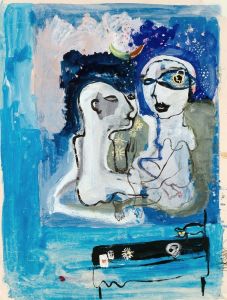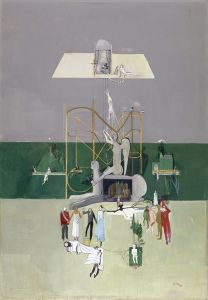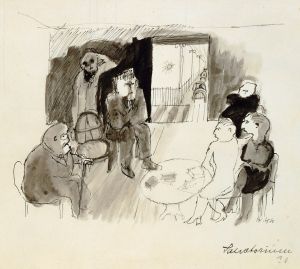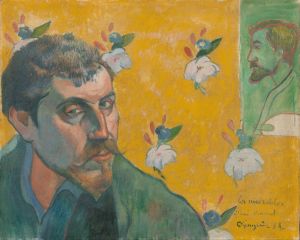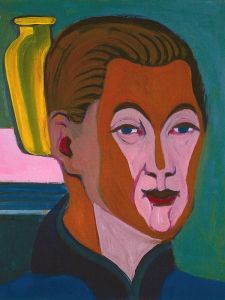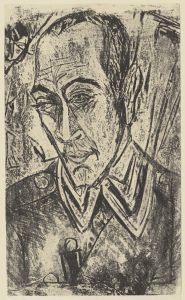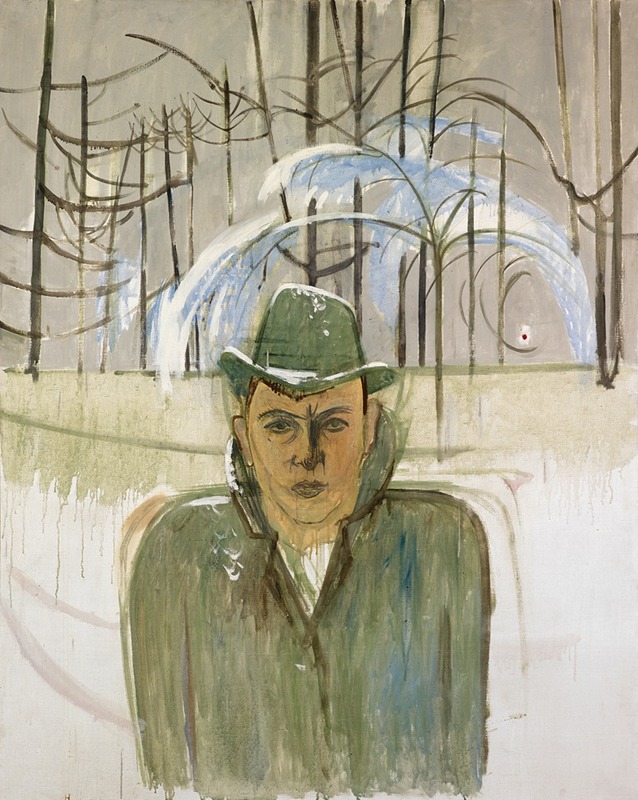
Self-Portrait
A hand-painted replica of Walter Kurt Wiemken’s masterpiece Self-Portrait, meticulously crafted by professional artists to capture the true essence of the original. Each piece is created with museum-quality canvas and rare mineral pigments, carefully painted by experienced artists with delicate brushstrokes and rich, layered colors to perfectly recreate the texture of the original artwork. Unlike machine-printed reproductions, this hand-painted version brings the painting to life, infused with the artist’s emotions and skill in every stroke. Whether for personal collection or home decoration, it instantly elevates the artistic atmosphere of any space.
Walter Kurt Wiemken (1907-1940) was a Swiss painter associated with the avant-garde movement in the early 20th century. He is known for his contributions to modern art, particularly in the realm of expressionism and surrealism. One of his notable works is the "Self-Portrait," which provides a glimpse into his artistic style and personal introspection.
The "Self-Portrait" by Walter Kurt Wiemken is a significant piece that reflects the artist's exploration of identity and self-perception. Painted during a period when Wiemken was deeply involved in the avant-garde scene, this work exemplifies his engagement with contemporary artistic trends and his quest for self-expression.
Wiemken's "Self-Portrait" is characterized by its bold use of color and dynamic composition. The painting features a striking depiction of the artist, rendered with expressive brushstrokes that convey a sense of immediacy and emotional depth. The use of vibrant hues and contrasting tones highlights Wiemken's skill in manipulating color to evoke mood and atmosphere.
In this self-portrait, Wiemken's face is the focal point, capturing the viewer's attention with its intense gaze and detailed rendering. The background, though less defined, complements the central figure, creating a harmonious balance between the subject and its surroundings. This interplay between the figure and the background is a hallmark of Wiemken's style, demonstrating his ability to integrate elements of abstraction with representational forms.
Wiemken's approach to self-portraiture is reflective of the broader trends in modern art during the early 20th century. Artists of this period were increasingly interested in exploring the inner workings of the human psyche, and self-portraits became a means of delving into personal identity and existential themes. Wiemken's "Self-Portrait" is a testament to this introspective approach, offering a window into the artist's inner world.
The painting also reveals Wiemken's technical proficiency and his ability to convey complex emotions through visual means. The expressive quality of the brushwork and the thoughtful composition suggest a deep engagement with the medium of painting and a commitment to pushing the boundaries of traditional portraiture.
Walter Kurt Wiemken's career, though tragically cut short by his untimely death in 1940, left a lasting impact on the Swiss art scene. His works, including the "Self-Portrait," continue to be celebrated for their innovative approach and emotional resonance. Wiemken's contributions to modern art are recognized for their originality and their ability to capture the spirit of the avant-garde movement.
In summary, Walter Kurt Wiemken's "Self-Portrait" is a powerful example of early 20th-century modern art. It encapsulates the artist's exploration of self-identity, his mastery of color and composition, and his engagement with the avant-garde trends of his time. This painting remains an important piece in understanding Wiemken's artistic legacy and the broader context of modernist self-portraiture.








